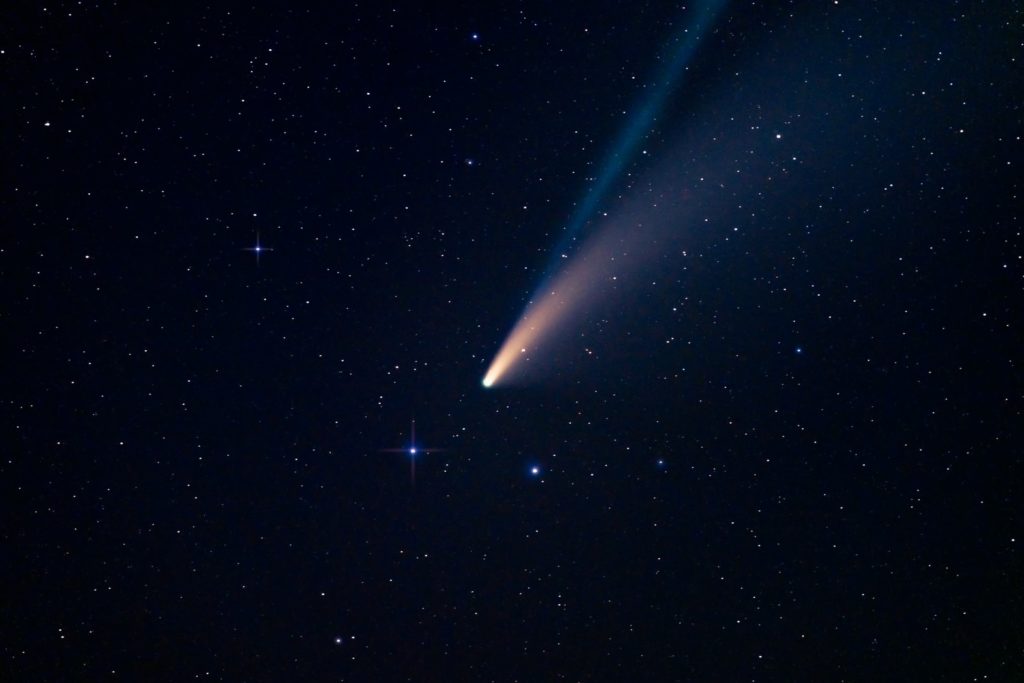Hubble just spotted the biggest comet coma ever and it is headed towards our general neighborhood!

But we wouldn’t break out the telescope just yet; Comet C/2014 UN271 (Bernardinelli-Bernstein) won’t be here until 2031.
Described as 80 miles across, or roughly the size of the US state of Rhode Island, Bernardinelli-Bernstein is currently 2 billion miles away and traveling at 22,000 miles per hour, shedding carbon monoxide gas as it does.
Just how, exactly, does NASA estimate the size of an object so far away? Using a computer model, of course.
“[Man-To] Hui and his team compared the brightness of the nucleus to earlier radio observations from the Atacama Large Millimeter/submillimeter Array (ALMA) in Chile. This combined data constrains the diameter and the reflectivity of the nucleus. The new Hubble measurements are close to the earlier size estimates from ALMA, but convincingly suggest a darker nucleus surface than previously thought.”
The NASA blog post says that the comet is theorized to originate out of the Oort Cloud. To reach this far, it has traveled for one million years on a 3-million-long elliptical orbit. Again, this can be theorized using computer modeling to pinpoint the path of the comet itself.
Studying comets is thought to give astronomers a glimpse into the solar system’s past with the agency describing them as “deep freeze” samples from the beginning.
Interestingly, the Oort Cloud is theorized to exist though it has not been observed directly:
“First hypothesized in 1950 by Dutch astronomer Jan Oort, the Oort Cloud still remains a theory because the innumerable comets that make it up are too faint and distant to be directly observed. Ironically, this means the solar system's largest structure is all but invisible. It's estimated that NASA's pair of Voyager spacecraft won't reach the inner realm of the Oort Cloud for another 300 years and could take as long as 30,000 years to pass through it.”
While we wait for James Webb to get online, it’s awesome to see Hubble still contributing in massive ways – and regularly – to our understanding of the universe.
Check out our other photography news on Light Stalking at this link right here.
[NASA]




